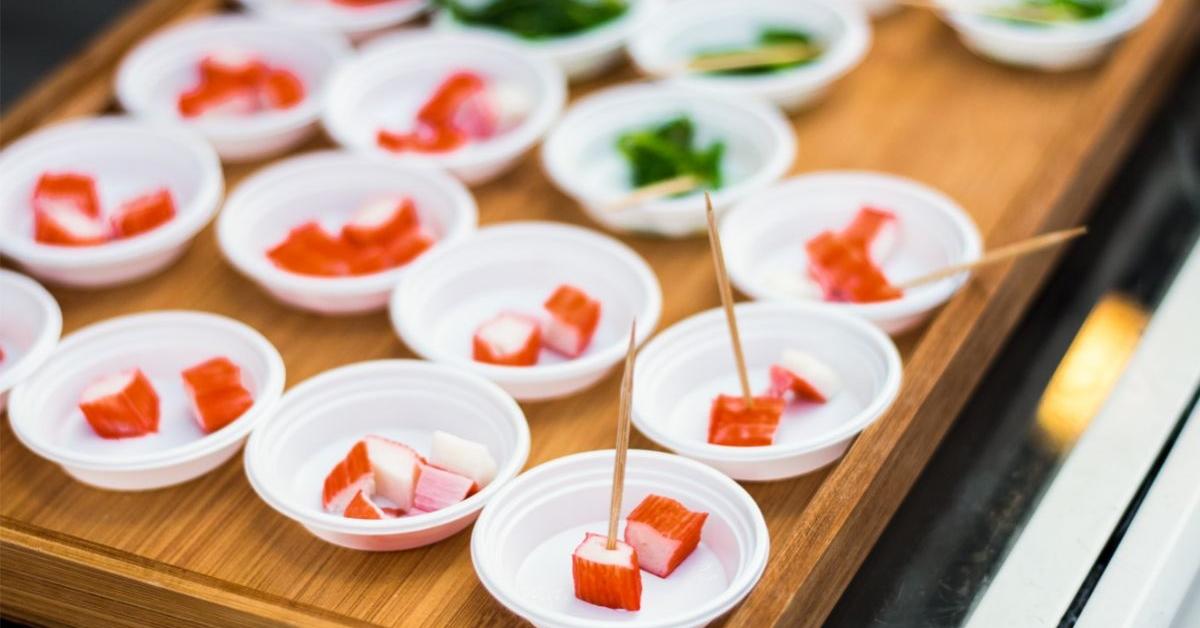Are you curious to know what is kanikama? You have come to the right place as I am going to tell you everything about kanikama in a very simple explanation. Without further discussion let’s begin to know what is kanikama?
Kanikama, a term often heard in the context of sushi, may spark curiosity about its origins, composition, and culinary applications. In this comprehensive guide, we will delve into the details of Kanikama, exploring its role in sushi, ingredients, variations, and shedding light on its nutritional aspects.
What Is Kanikama?
Kanikama, also known as crab stick or imitation crab stick, is a popular ingredient in sushi and other Asian cuisines. Despite its name, Kanikama doesn’t contain real crab meat but is crafted to imitate the flavor and texture of crab. Its versatility and affordability make it a staple in various dishes.
What Is Kanikama In Sushi?
In sushi, Kanikama is commonly used as a filling in rolls. Its mild and slightly sweet flavor, coupled with a firm and chewy texture, complements other sushi ingredients. Kanikama adds a delightful element to sushi, offering an alternative to traditional seafood fillings.
What Is Kanikama Made Of?
Kanikama is typically made from processed and flavored fish paste, usually a combination of white fish such as pollock or hake. The fish paste is blended with starch, egg whites, sugar, salt, and crab flavorings to mimic the taste and appearance of crab meat.
What Is Short Kanikama?
Short Kanikama refers to smaller or bite-sized versions of crab sticks. These are often used in salads, appetizers, or as a topping for sushi rolls, providing a convenient and flavorful addition to various dishes.
What Is Kanikama In English?
In English, Kanikama is commonly referred to as crab stick or imitation crab stick. The term “imitation” clarifies that it doesn’t contain real crab but replicates its taste and texture.
What Is Kanikama Crab?
Despite the name, Kanikama doesn’t contain real crab. It is a seafood product made from a mixture of processed fish, starch, and flavorings. The term “Kanikama crab” is used to highlight its crab-like qualities.
What Is Kanikama Vs Imitation Crab?
“Kanikama” and “imitation crab” are often used interchangeably, both referring to the same product. The term “Kanikama” is derived from the Japanese words “kani” (crab) and “kama” (leg), emphasizing its crab leg shape.
Is Kanikama Raw?
Kanikama is typically precooked during the manufacturing process. It undergoes heat treatment to ensure food safety, making it ready-to-eat without the need for further cooking. This characteristic makes it a convenient and time-saving ingredient in various recipes.
Is Kanikama Healthy?
Kanikama can be a part of a healthy diet when consumed in moderation. While it provides a low-calorie protein source, it’s essential to be mindful of its sodium content. Additionally, the nutritional profile may vary among brands, so checking labels is advisable.
Kanikama Sushi: A Sushi Staple
Kanikama is a common ingredient in sushi, often found in California rolls and other maki varieties. Its mild taste and appealing texture make it a favorite choice for sushi enthusiasts, contributing to the diverse array of sushi offerings.
Visit Ofstype to Get to know about more concepts like this.
Kanikama Salad: A Refreshing Twist
Kanikama is also featured in salads, adding a seafood element to fresh greens and vegetables. Kanikama salad often includes a mix of crisp ingredients, creating a refreshing and satisfying dish.
Is Crab Stick Healthy?
Crab sticks, including Kanikama, can be part of a balanced diet. They offer a lean protein source with lower fat content compared to some other seafood options. However, it’s important to be mindful of additives and sodium levels in processed seafood products.
Conclusion:
In conclusion, Kanikama, the beloved crab stick or imitation crab stick, has carved a niche for itself in the world of sushi and Asian cuisine. Whether adorning sushi rolls, enhancing salads, or making a standalone dish, Kanikama offers a versatile and accessible seafood option. Understanding its composition, culinary applications, and nutritional aspects ensures a delightful and informed dining experience for seafood enthusiasts and curious foodies alike.
FAQ
What Is Kanikama Made Of?
Kanikama is a processed seafood product made from surimi, a fish paste that typically consists of white fish, such as pollock or whiting. The paste is flavored, colored, and shaped to resemble crab meat, making it an affordable alternative to authentic crab meat.
Is Imitation Crab Ok For You?
There’s an increased risk of food safety and allergy issues with imitation crabs since many surimi manufacturers don’t list the ingredients accurately on the packages. In fact, some studies have also found mislabeled surimi products containing fish that can cause seafood illnesses like ciguatera poisoning.
What Is Kanikama In California Roll?
Sushi restaurants typically use imitation crab meat, also known as “kani kama” or “surimi,” for the finely shredded crab in California rolls and kani salad.
Does Kanikama Have Shellfish?
Contains Fish, Wheat, Crustacean Shellfish (Shrimp), Egg and Soy.
I Have Covered All The Following Queries And Topics In The Above Article
What Is Kanikama Sushi
What Is Kanikama In Sushi
What Is Kanikama Made Of
What Is Short Kanikama
What Is Kanikama In English
What Is Kanikama Crab
What Is Kanikama Vs Imitation Crab
Is Kanikama Raw
Is Kanikama Healthy
Kanikama Sushi
Kanikama Salad
Is Crab Stick Healthy
What Is Kanikama
